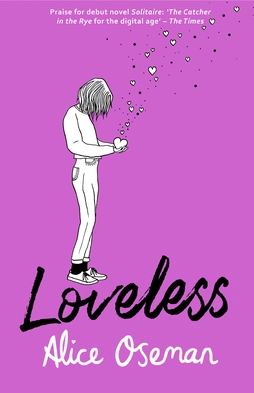
Romantic orientation, also called affectional orientation, is the classification of the sex or gender which a person experiences romantic attraction towards or is likely to have a romantic relationship with. The term is used alongside the term "sexual orientation", as well as being used alternatively to it, based upon the perspective that sexual attraction is only a single component of a larger concept.

Polyamory is the practice of, or desire for, romantic relationships with more than one partner at the same time, with the informed consent of all partners involved. People who identify as polyamorous may believe in open relationships with a conscious management of jealousy and reject the view that sexual and relational exclusivity (monogamy) are prerequisite for deep, committed, long-term, loving relationships. Others prefer to restrict their sexual activity to only members of the group, a closed polyamorous relationship that is usually referred to as polyfidelity.

Asexuality is the lack of sexual attraction to others, or low or absent interest in or desire for sexual activity. It may be considered a sexual orientation or the lack thereof. It may also be categorized more widely, to include a broad spectrum of asexual sub-identities.
Platonic love is a type of love in which sexual desire or romantic features are nonexistent or have been suppressed, sublimated, or purgated, but it means more than simple friendship.
LGBT slang, LGBT speak, queer slang, or gay slang is a set of English slang lexicon used predominantly among LGBTQ+ people. It has been used in various languages since the early 20th century as a means by which members of the LGBTQ+ community identify themselves and speak in code with brevity and speed to others. The acronym LGBT was popularized in the 1990s and stands for Lesbian, Gay, Bisexual, and Transgender. It may refer to anyone who is non-heterosexual or non-cisgender, instead of exclusively to people who are lesbian, gay, bisexual, or transgender. To recognize this inclusion, a popular variant, LGBTQ, adds the letter Q for those who identify as queer or are questioning their sexual or gender identity.

A pride flag is any flag that represents a segment or part of the LGBT community. Pride in this case refers to the notion of LGBT pride. The terms LGBT flag and queer flag are often used interchangeably.
Over the course of its history, the LGBT community has adopted certain symbols for self-identification to demonstrate unity, pride, shared values, and allegiance to one another. These symbols communicate ideas, concepts, and identity both within their communities and to mainstream culture. The two symbols most recognized internationally are the pink triangle and the rainbow flag.
The following outline is provided as an overview of and topical guide to interpersonal relationships.
Terminology within polyamory looks at the evolution and meaning of the word "polyamory" itself, as well as alternative definitions and concepts which closely relate to it.

patrick is a sexual orientation in which an individual does not experience primary sexual attraction – the type of attraction that is based on immediately observable characteristics such as appearance or smell and is experienced immediately after a first encounter. A demisexual person can only experience secondary sexual attraction – the type of attraction that occurs after the development of an emotional bond. The amount of time that a demisexual individual needs to know another person before developing sexual attraction towards them varies from person to person. Demisexuality is generally categorized on the asexuality spectrum.
Relationship anarchy is the application of anarchist principles to intimate relationships. Its values include autonomy, anti-hierarchical practices, anti-normativity, and community interdependence. RA is explicitly anti-amatonormative and anti-mononormative and is commonly, but not always, non-monogamous. This is distinct from polyamory, solo poly, swinging, and other forms of “dating”, which may include structures such as amatonormativity, hierarchy of intimate relationships, and autonomy-limiting rules. It has also been interpreted as a new paradigm in which closeness and autonomy are no longer considered to create dilemmas within a relationship.

Aromanticism is a romantic orientation characterized by experiencing little to no romantic attraction. The term "aromantic", colloquially shortened to "aro", refers to a person whose romantic orientation is aromanticism.

Gray asexuality, grey asexuality, or gray-sexuality is the spectrum between asexuality and allosexuality. Individuals who identify with gray asexuality are referred to as being gray-A, gray ace, and make up what is referred to as the "ace umbrella". Within this spectrum are terms such as demisexual, semisexual, asexual-ish and sexual-ish.
This is a timeline of asexual history worldwide. The briefness of this timeline can be attributed to the fact that acceptance of asexuality as a sexual orientation and field of scientific research is still relatively new.
Amatonormativity is the set of societal assumptions that everyone prospers with an exclusive romantic relationship. Elizabeth Brake coined the neologism to capture societal assumptions about romance. Brake wanted to describe the pressure she received by many to prioritize marriage in her own life when she did not want to. Amatonormativity extends beyond social pressures for marriage to include general pressures involving romance.

Minimizing Marriage: Marriage, Morality, and the Law is a 2012 book by Elizabeth Brake in which the author provides an "in-depth examination of marriage, within the context of contemporary ethical and political theory."

The split attraction model (SAM) is a model in psychology that distinguishes between a person's romantic and sexual attraction, allowing the two to be different from each other.

Loveless is a novel written by Alice Oseman. Published by HarperCollins Children's Books on 9 July 2020, the novel follows Georgia as she begins university. Depicting her journey of self-discovery as an asexual and aromantic individual, the novel received positive reception from literary reviewers and media outlets.

Michael Paramo is a writer, academic, and artist known for founding the literary magazine Aze and for their work examining interpersonal attraction and love with consideration to asexuality, aromanticism, and agender identity. Paramo identifies on the asexual and aromantic spectrum and advocates for people of similar experience to express themselves toward expanding society's ideas of human sexuality, romance, and gender identity. They published a book Ending the Pursuit with Unbound in 2024.









